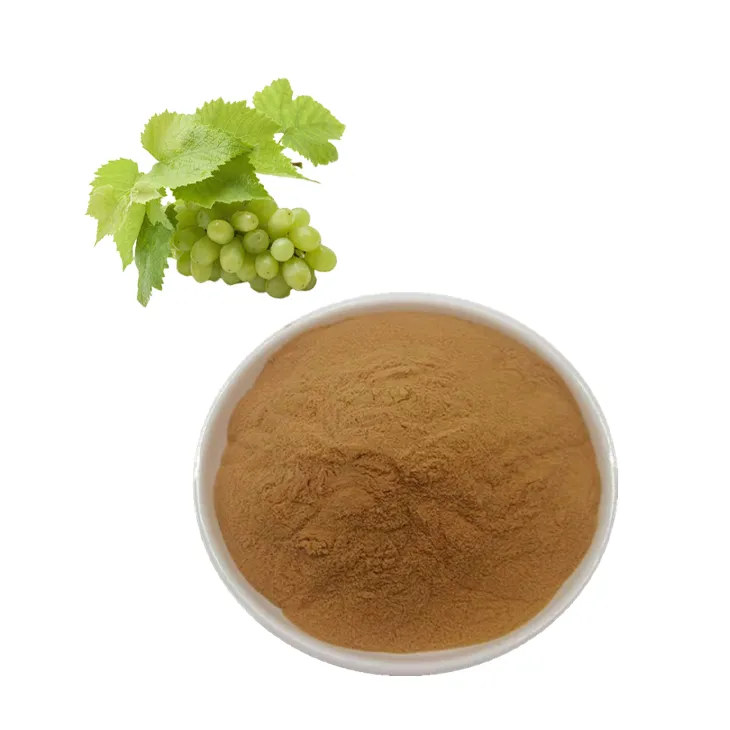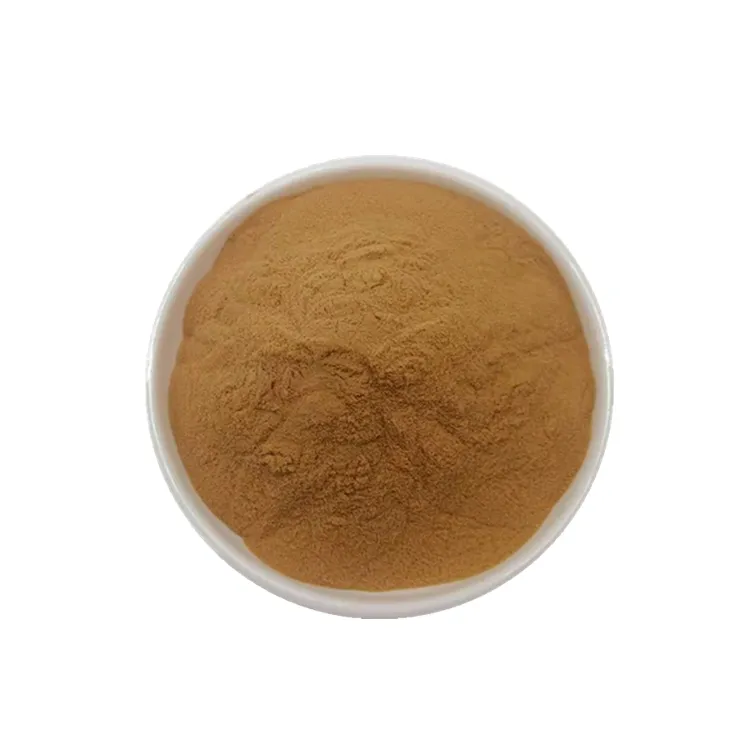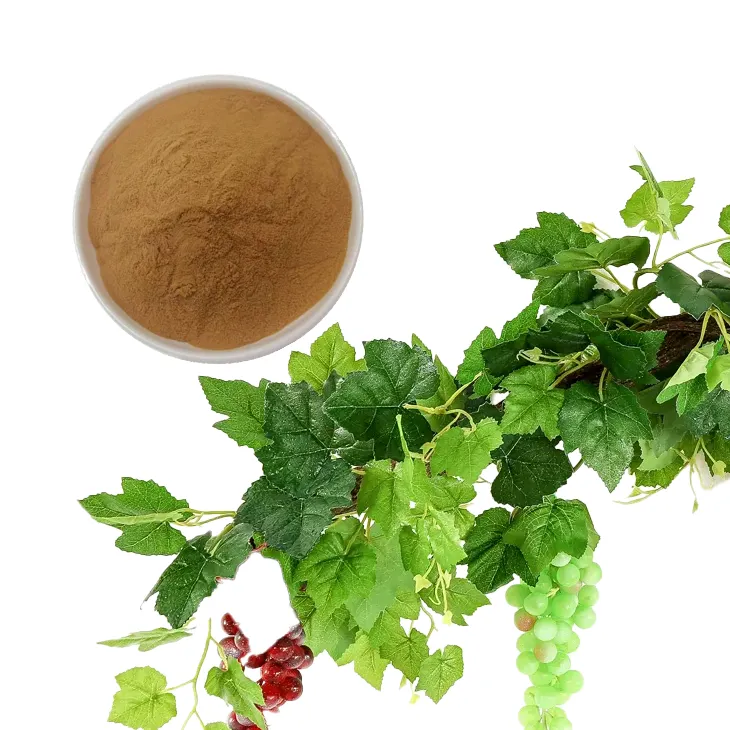- 0086-571-85302990
- sales@greenskybio.com
Grape Leaf Extract: Should You Use It for Skin Care?
2024-11-14

Introduction
In the realm of skin care, the search for natural and effective ingredients is an ongoing pursuit. Grape Leaf Extract has emerged as a potentially valuable addition to the skin care arsenal. This article delves deep into the various aspects of Grape Leaf Extract in skin care, exploring its potential benefits, extraction methods, and factors influencing its quality.

Benefits of Grape Leaf Extract for Skin Care
1. Skin Hydration
Grape leaf extract is rich in compounds that can contribute to skin hydration. One of the key components is polyphenols. These polyphenols help in retaining moisture within the skin cells. When applied topically, they form a thin layer on the skin surface, which reduces water loss. This is similar to how a good moisturizer works, but with the added advantage of being a natural substance.
Another aspect of its hydrating effect is related to its ability to stimulate the production of hyaluronic acid in the skin. Hyaluronic acid is a natural moisturizer found in the skin, and as we age, its production decreases. Grape leaf extract can potentially boost the synthesis of hyaluronic acid, thereby enhancing skin hydration and giving the skin a plump and youthful appearance.
2. Anti - Aging Effects
The anti - aging properties of grape leaf extract are quite remarkable. Antioxidants present in the extract play a crucial role in this regard. Free radicals are constantly attacking our skin cells, causing damage that leads to premature aging, such as wrinkles, fine lines, and loss of elasticity. The antioxidants in grape leaf extract, like resveratrol, scavenge these free radicals, neutralizing their harmful effects.
Additionally, grape leaf extract can stimulate collagen production. Collagen is the protein that provides structural support to the skin. As we age, collagen production declines, resulting in sagging skin. By promoting collagen synthesis, grape leaf extract can help in reducing the appearance of wrinkles and improving skin firmness.
3. Treatment of Skin Conditions
For those with skin conditions, grape leaf extract may offer some relief. It has anti - inflammatory properties, which can be beneficial for conditions such as eczema and psoriasis. Inflammation is a common factor in these skin disorders, and the anti - inflammatory compounds in the extract can help to soothe the irritated skin.
Grape leaf extract may also have antibacterial properties. This can be useful in preventing and treating skin infections, especially minor ones. It can help keep the skin clean and free from harmful bacteria that can cause breakouts or other skin problems.

Extraction Methods of Grape Leaf Extract
There are several methods for extracting grape leaf extract, and the method used can impact the quality and effectiveness of the final product.
1. Solvent Extraction
This is one of the most common methods. A solvent, such as ethanol or water, is used to extract the active compounds from the grape leaves. Ethanol is often preferred as it can dissolve a wide range of compounds. However, the choice of solvent needs to be carefully considered as it can also extract unwanted substances if not properly controlled.
2. Supercritical Fluid Extraction
This is a more advanced and environmentally friendly method. Supercritical fluids, typically carbon dioxide, are used under high pressure and temperature conditions. This method has the advantage of being able to extract specific compounds more selectively, resulting in a purer extract. However, it requires specialized equipment and is more expensive.

Quality Factors of Grape Leaf Extract
1. Source of the Grape Leaves
The quality of grape leaf extract starts with the source of the grape leaves. Organic grape leaves are generally considered superior as they are grown without the use of pesticides and synthetic fertilizers. Leaves from different grape varieties may also vary in their chemical composition. For example, some varieties may have a higher concentration of polyphenols or other beneficial compounds.
2. Processing and Storage
After extraction, the processing and storage of the grape leaf extract are crucial. Proper processing techniques are required to ensure that the active compounds are preserved. For example, excessive heat during processing can degrade some of the sensitive compounds.
Storage conditions also play a vital role. Grape leaf extract should be stored in a cool, dry place, away from sunlight. Exposure to light and heat can cause the breakdown of the active ingredients, reducing the effectiveness of the extract.
Is Grape Leaf Extract the Right Choice for Your Skin?
Deciding whether grape leaf extract is the right choice for your skin depends on several factors.
1. Skin Type
- For dry skin, the hydrating properties of grape leaf extract can be very beneficial. It can help to moisturize the skin and improve its texture.
- Oily skin may also benefit from grape leaf extract. Its antibacterial properties can help in reducing breakouts, while the antioxidant properties can protect the skin from environmental damage.
- Sensitive skin users should be cautious. Although the extract has anti - inflammatory properties, some individuals may still experience irritation. It is advisable to do a patch test first.
2. Skin Concerns
- If anti - aging is your main concern, grape leaf extract with its antioxidant and collagen - promoting properties can be a good option.
- For those dealing with skin conditions like eczema or psoriasis, the anti - inflammatory and antibacterial properties of the extract may be helpful. However, it should not replace medical treatment but can be used as a complementary approach.
Conclusion
Grape leaf extract shows great potential in skin care with its multiple benefits, including skin hydration, anti - aging effects, and the ability to treat certain skin conditions. However, the effectiveness of the extract depends on various factors such as the extraction method, quality of the source, and processing and storage conditions. When considering using grape leaf extract for skin care, it is important to take into account your skin type and specific skin concerns. Overall, it is a natural ingredient that is worth exploring further in the world of skin care.
FAQ:
What are the benefits of grape leaf extract for skin hydration?
Grape leaf extract contains certain compounds that can help improve skin hydration. It may enhance the skin's ability to retain moisture. Some of the bioactive components in the extract can strengthen the skin's natural barrier function. This barrier is crucial for preventing water loss from the skin. By maintaining the integrity of this barrier, grape leaf extract can contribute to a more hydrated and supple skin.
How does grape leaf extract have anti - aging effects on the skin?
Grape leaf extract has anti - aging effects in several ways. It is rich in antioxidants, such as polyphenols. These antioxidants can neutralize free radicals, which are unstable molecules that can damage skin cells and contribute to premature aging. Additionally, the extract may stimulate collagen production in the skin. Collagen is a protein that gives skin its firmness and elasticity. As we age, collagen production decreases, leading to wrinkles and sagging skin. By promoting collagen synthesis, grape leaf extract can help reduce the appearance of fine lines and wrinkles.
Can grape leaf extract treat skin conditions?
There is evidence to suggest that grape leaf extract can be beneficial for certain skin conditions. For example, its anti - inflammatory properties may be helpful in treating skin conditions like eczema or psoriasis. Inflammation is a key factor in these conditions, and the anti - inflammatory components in the grape leaf extract can potentially reduce redness, itching, and swelling. However, it should not be considered a sole treatment and should be used in conjunction with proper medical advice.
What are the important extraction methods for grape leaf extract?
Common extraction methods for grape leaf extract include solvent extraction and supercritical fluid extraction. Solvent extraction involves using solvents like ethanol or water to extract the active compounds from the grape leaves. This method is relatively simple and cost - effective. Supercritical fluid extraction, on the other hand, uses supercritical carbon dioxide. It has the advantage of being more environmentally friendly and can often produce a purer extract with a higher concentration of bioactive compounds.
How can one determine the quality of grape leaf extract for skin care?
The quality of grape leaf extract for skin care can be determined by several factors. Firstly, the source of the grape leaves is important. Leaves from organically grown grapes may be of higher quality as they are less likely to contain pesticides or other contaminants. Secondly, the extraction method used can affect the quality. A more advanced and precise extraction method may result in a higher - quality extract. Thirdly, the analysis of the active compounds in the extract, such as polyphenol content, can also give an indication of its quality.
Related literature
- The Role of Grape - Derived Compounds in Skin Health"
- "Antioxidant Properties of Grape Leaf Extract and Their Impact on Skin Aging"
- "Grape Leaf Extract: A Promising Ingredient for Skin Conditions"
- ▶ Hesperidin
- ▶ citrus bioflavonoids
- ▶ plant extract
- ▶ lycopene
- ▶ Diosmin
- ▶ Grape seed extract
- ▶ Sea buckthorn Juice Powder
- ▶ Beetroot powder
- ▶ Hops Extract
- ▶ Artichoke Extract
- ▶ Reishi mushroom extract
- ▶ Astaxanthin
- ▶ Green Tea Extract
- ▶ Curcumin Extract
- ▶ Horse Chestnut Extract
- ▶ Other Problems
- ▶ Boswellia Serrata Extract
- ▶ Resveratrol Extract
- ▶ Marigold Extract
- ▶ Grape Leaf Extract
- ▶ blog3
- ▶ blog4
- ▶ blog5
-
Organic Tongkat Ali extract powder factory.
2024-11-14
-
How to make powder with ashwagandha extract.
2024-11-14
-
Rosehip extract manufacturers from China.
2024-11-14
-
The best cat's claw extract in nature.
2024-11-14
-
Chinese Dandelion Leaf Extract Suppliers.
2024-11-14
-
Cactus Extract
2024-11-14
-
Rosemary extract
2024-11-14
-
Honeysuckle Pollen
2024-11-14
-
Scutellaria Extract
2024-11-14
-
Sugarcane Extract
2024-11-14
-
Kidney Bean Extract
2024-11-14
-
Citrus bioflavonoids
2024-11-14
-
Giant Knotweed Extract
2024-11-14
-
Okra Extract
2024-11-14
-
Polygonum multiflorum extract
2024-11-14





















